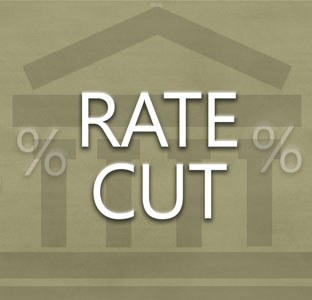Why Reverse Quantitative Easing?
Consequences of Unwinding the Federal Reserve Balance Sheet
One of the great unknowns going forward is the consequences of shrinking the Federal Reserves (FED) balance sheet. Neither the FED nor anyone else knows exactly how this will affect our markets. We are in unchartered territory – this has never been done before.
Background
To stem a complete collapse of the financial system in 2008, the FED embarked on an asset purchase program – quantitative easing (QE). This program kept interest rates at record low levels hoping bank lending would increase and consumers would spend money (feeling wealthy as a result of higher asset prices), and thus spur economic growth and job creation. From 2008 – 2014, the FED, by purchasing Treasury and mortgage-backed securities (MBS) increased the size of the balance sheet from about $700 billion to about $4.3 trillion – yes, that is trillion! There were three rounds of bond- buying programs, or QE. The FED’s balance sheet increased from about 7% of U.S. gross domestic product (GDP) to a peak of about 25% of GDP in 2014. Even though QE ended in 2014, the FED has been reinvesting the principal and interest from its securities into new bonds – this keeps the total quantity of bonds on the balance sheet at historically high levels.
Why Reverse QE?
Historically in times of financial crisis, the FED would lower interest rates to spur economic growth. A smaller balance sheet would allow the FED to expand it again to fight any future downturn. The sheer size of the current bonds held suppresses long-term yields and has led to investors moving out the yield curve to find income (think junk bonds, for example). This has led to bubbles forming in many asset classes. The QE experiment has not worked – sub-par economic growth and unemployment are high for many people. The FED wants out of the market manipulation business.
How to Reverse QE?
It is thought that sometime later this year the FED will stop reinvesting its Treasury and MBS portfolios – initially bringing its balance sheet down by about $10 million each month. Those amounts will gradually increase each month until after a year, when balance sheet reduction reaches $50 million per month. Just for comparison purposes on the way up, securities purchases were $100 million/month during QE1! Based on current security holdings of about $4.3 trillion, this would reduce holdings by about 14% per year once fully implemented.
Consensus Market Impact
Optimists’ expectations are for markets to easily digest securities selling if the FED’s intentions are communicated clearly, and the process is gradual and passive. Those expectations would also include the probability that rates will rise not only due to shrinking the balance sheet, but also improving global economic growth as well as “slightly” higher inflation.
Game Changer – Out of consensus inflationary pressures
The optimists’ assume that there will not be an inflation problem in the short and long term. We have had some upticks in the surprise indexes (show positive or negative surprises versus economic data being reported) and some analytical models are showing possible pickups in future inflation via increases in average hourly earnings. However, right now inflation in the U.S. is missing, and so the markets are not focused on this issue at all – but we will!
Market Commentary
For those who have not kept track, just a few pieces of information on the markets during the first half. The stock market averages were driven in large part by just six very-overvalued, momentum stocks. These six stocks accounted for about 40% of the stock market return. Underneath the averages, many stocks were down or flat. There was a return of volatility this year – something that has been largely missing for a few years. Also, earnings the first quarter of 2017 were very good – up about 13.80%. Much of that increase was due to the comparison of energy stocks earnings from the previous year – their earnings recovered somewhat this year from a very difficult 2016. In the bond market there has also been a return to volatility. During the first half we have seen rates move up and down, but even though economic growth has been less than stellar, it appears that the FED is on a path to raise rates.
We appreciate and thank you for the trust and confidence you have placed in
Occam Capital® Management, LLC.
*********************************************************************************************
As required by the United States Securities and Exchange Commission (SEC), Occam Capital’s disclosure documents,
Brochure Form ADV Part 1A and Part 2A are available at the (SEC) website: http://www.adviserinfo.sec.gov. *********************************************************************************************
Please contact Occam Capital® if there are any changes in your financial situation or investment objectives or if you wish to impose, add, or modify any reasonable restrictions to our investment management services.
********************************************************************************************

